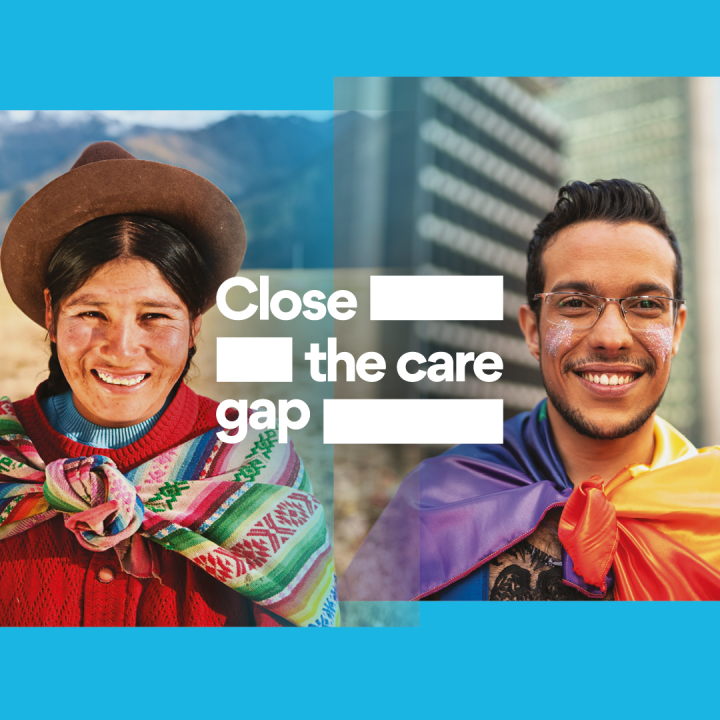The path to beating cancer lies in great science and great communication
This article first appeared on LinkedIn on February 4 2022
World Cancer Day is one of those moments in the year when I find myself reflecting: on the journey we have been on as a haematology community and where we are going next. One topic that jumped out to me this year was on the importance of communication when it comes to healthcare information.

When I started out in haematology over 20 years ago, life expectancy for people living with blood cancer was low [1] and information on treatment often siloed or not always easily accessible. Since then, life expectancy has thankfully improved, with more than 50% of people diagnosed with multiple myeloma living for more than five years after initial diagnosis.[2] But with that increase in life expectancy, we have also seen an exponential increase in the amount of health information available to not only healthcare professionals, but also patients and their loved ones.[3] The ongoing COVID-19 pandemic has compounded this – for example, Finland recorded 77% of people aged 16-74 searching online for health-related topics in 2020.[3]
This isn’t a bad thing – we often say that every day needs to be World Cancer Day for our industry, and the amount of dialogue and information is reflecting that. I’ve also long been an advocate of patients having more accurate and digestible information available to help them make decisions and to play a role in closing the care gap across the region. And this is something that has also been echoed in conversations that Janssen have had with patient groups over the years. But it also reinforces how critical it is to ensure effective and efficient communication with them, as well as with the healthcare professionals who treat them.
The treatment portfolio for multiple myeloma is growing all the time, giving patients and their hematologists more and more options when it comes to managing their condition. Each of these options brings a unique set of criteria and factors to consider. The growth of precision medicine and therapies that are tailored to specific patients takes this a step further – by moving away from a one-size-fits-all approach, we open up new routes that must be clear and understandable to those who might use them.
That is where communication is critical, ensuring that the haematology community have the latest data and research to hand, but in a way that doesn’t overwhelm them through the sheer amount of information. One way to do this with physicians is by complementing more personalised medicines with more personalised interactions as well. So every time they engage with us – whether that is on a WebCall or in a face-to-face meeting – their experience is as meaningful as possible.
This has been one of the silver linings we must take from Covid-19 – it’s pressed fast-forward on our adoption of digital solutions to connect better with people, and we should continue to build on this, bypassing geographical barriers to share the latest data on multiple myeloma. Similarly, we must continue to ensure that the voices of the people living with cancer are heard loud and clear, and systematically embedded into entire treatment lifecycle so we can provide them with healthcare information that addresses their needs, rather than what we want to tell them.
And finally, we must keep building relationships and collaborations with a broad range of stakeholders. With so much information out there, it’s important we bring our heads – and hearts – together to synthesise this information into actionable insight, and to agree on how we can better get the right information to the right people in the right way at the right time. As I said, the fact we need to figure out how best to help oncologists and patients to navigate all the novel treatment options now available is a good problem to have, as it speaks to how much the field has evolved over the last few decades.
But as we work to get improve people’s outcomes, we must also work hard to ensure that all of this valuable scientific progress is communicated effectively to the people for whom it makes the most difference. And we are making great strides in doing this. By bringing stakeholders together to discuss the current challenges, we can begin to determine the solutions. And to achieve our goal of ultimately curing cancer, we have to ensure everyone understands which is the right treatment for the right patient at the right time, taking it one day at a time.
This article first appeared on LinkedIn on February 4 2022
References
[1] Mey et al. 2016. Improved survival of older patients with multiple myeloma in the era of novels agents. Haematological Oncology; 34(4):217-223.
[2] Cancer.net. 2021. Multiple Myeloma: Statistics. Available at: https://www.cancer.net/cancer-types/multiple-myeloma/statistics#:~:text=The%20overall%205%2Dyear%20survival,are%20diagnosed%20at%20this%20stage. Last accessed: January 2022.
[3] Eurostat. 2021. One in two EU citizens look for health information online. Available at: https://ec.europa.eu/eurostat/web/products-eurostat-news/-/edn-20210406-1 Last accessed: January 2022


